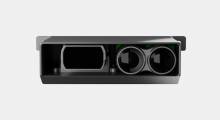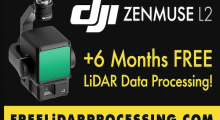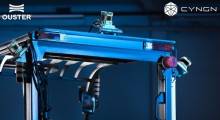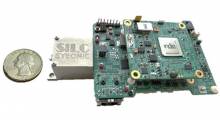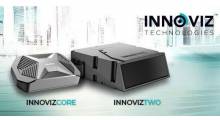How do autonomous mobile robots, or AMRs, safely and efficiently move around factories and warehouses without markers, like automated guided vehicles? Resgreen Group International Inc. today explained how its “natural guidance feature” uses 2D and 3D lidar sensors to scan a facility and create a map of the areas where the AMRs will travel. The robots then compare their surroundings with the map to verify their location.
“The 3D lidar is used primarily in tunneling applications, where the vehicle travels underneath a load-handling frame, connects, and moves it to another location,” said Parsh Patel, CEO of Resgreen Group International Inc. (RGGI). “While the 3D lidar produces an enormous amount of point-cloud data that needs to be processed, we use a 2D slice to determine the vehicle’s exact location quickly, like a traditional laser time-of-flight scanner.”
Shelby Township, N.J.-based RGGI said it develops artificial intelligence robotics (AIRs), AMRs, and automated guided vehicles (AGVs). The company said its engineers have years of experience in the material handling and robotics industries, which has led to “significant” intellectual property for the company.
RGGI also provides consulting services including back-end operational oversight, material handling assessment, workflow analysis, and steady-state yield management using AI and fleet management systems.
Lidar and ROS guide Resgreen's AMRs
Lidar, which stands for “light detection and ranging,” uses laser beams to calculate how long it takes for pulsed light to hit an object and reflect it back. These measurements help create a 3D map of the vehicle’s surroundings to help guide the vehicle safely.
“Because it is so accurate, lidar is used by many of the autonomous vehicles that are on our roadways today,” said Sarah Carlson, vice president of marketing communications at Resgreen Group. “This has made lidar systems much more affordable for AMRs.”
“With LiDAR, you get the precision and accuracy you need, without having to worry about any dust or damage to a camera lens, like you do with vision systems,” she added.
RGGI is using two different lidar products compatibile with the Robot Operating System (ROS) to ensure that its vehicles are in compliance with any other ROS systems. The sensors detect 60 to 120 degrees in front of and behind the robot—at a distance of 14 feet.
The 2D and 3D lidar systems are featured in RGGI’s LilBuddy AMR. LilBuddy is an ultra-compact vehicle that can move loads over 200 lb., said the company.
Lidar market expected to grow
The global lidar market, which includes robotics applications, could experience a compound annual growth rate (CAGR) of 22.1%, reaching $5.8 billion by 2030, according to Market Research Future. Similarly, Research and Markets predicted a CAGR of 15% between 2022 and 2028.
Mordor Intelligence was more bullish, saying the global lidar market was valued at $1.6 billion in 2028 and might reach $7.3 billion by 2026 at a CAGR of 29.55%.
The market for AMRs using lidar could grow from $1.8 billion in 2022 to $8 billion by 2028, with a CAGR of 29%, forecast 360 Research Reports.
Article topics
Email Sign Up




